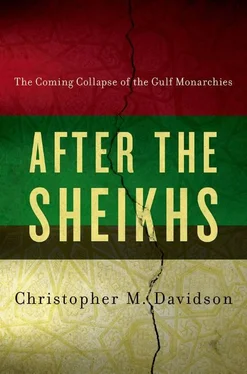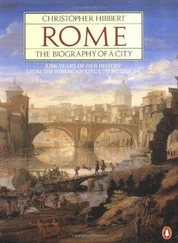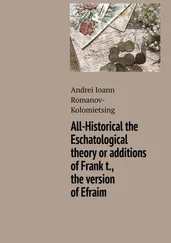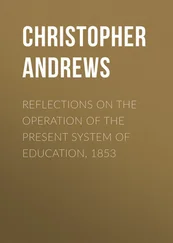Under Abdullah, little has changed. The Consultative Council now stands at 150 members, but each is still appointed, sitting for four-year terms. Its powers remain weak, with its ability to call ministers to question or launch investigations into governmental affairs being very limited, despite supposedly being allowed to propose legislation. [112] 56. See Nolan, May 2011.
The only significant development in recent years was an election in 2005 for municipal councils. But this too was severely restricted, with only half of the seats being elected, with only male candidates and voters being permitted, and with councillors enjoying little power as central ministries continued to dictate regional and municipal policies. [113] 57. Coates Ulrichsen, ‘Saudi Arabia’ in Davidson (2011), p. 72.
Fresh elections should have been staged in 2009, but these were cancelled on the grounds that the government needed time to study how best to ‘expand the electorate and the possibility of allowing women to vote’. Although elections were eventually staged in late 2011, seemingly as a concession to the Arab Spring movements elsewhere in the region, the same restrictions remained in place with no women being involved and with only half of the seats being elected. [114] 58. Associated Press , 22 March 2011.
As with Fahd, Abdullah has also tried to address the succession issue and strengthen the Al-Saud as a dynastic monarchy. In 2006 an Allegiance Commission or Hayat al-Bayah was set up, ostensibly to allow for some degree of consensus within the family over appointing new rulers and also to facilitate the dismissal of kings by the rest of the family in the event of illness or other problems. [115] 59. See Nolan, May 2011.
Although limiting the powers of Saudi Arabia’s religious police in recent years and — in 2007—separating the Supreme Court from the Al-Sheikh-controlled Ministry for Justice, [116] 60. Coates Ulrichsen, ‘Saudi Arabia’ in Davidson (2011), p. 71.
Abdullah has otherwise followed Fahd’s strategy of reinforcing the Saudi-Wahhabi alliance. In particular, he has ensured that only the state-appointed, Riyadh-based Council of Senior Religious Scholars has the ability to issue a fatwa or Islamic legal pronouncement in Saudi Arabia, thus reducing the influence of religious figures elsewhere in the country. [117] 61. See Nolan, May 2011.
In 1961 Kuwait joined Saudi Arabia as an independent state, after Britain formally withdrew its control over the increasingly prosperous and autonomous sheikhdom. Abdullah Al-Salim Al-Sabah duly proclaimed himself ‘emir’ and the United Nations granted recognition to the emirate of Kuwait, while the US had already established a consulate before Britain left, and had even begun to process Kuwaiti visas. [118] 62. US Department of State, ‘Background Note: Kuwait’ 2011.
Almost immediately, however, British troops had to be re-deployed following Iraqi claims on Kuwait. But by 1963 a new government in Iraq relinquished these claims [119] 63. Roberts (2011), p. 91.
and over the next two decades the Al-Sabah dynasty consolidated its position. The family has since ruled unopposed, with Jabar Al-Ahmad Al-Jabar Al-Sabah suffering only a brief exile in 1990 following Saddam Hussein’s invasion of Kuwait, and being quickly reinstated in 1991 following the US-led multinational Operation Desert Storm which ousted Iraq’s forces. Jabar was succeeded in 2006 by his crown prince, Saad Al-Abdullah Al-Sabah, who represented a different branch of the family. But due to Saad’s poor health he was peacefully deposed and replaced by another member of Jabar’s line, Sabah Al-Ahmad Al-Jabar Al-Sabah, who continues to be Kuwait’s emir.
Following independence, Abdullah was quick to draw up a new constitution for Kuwait and to establish a new parliament, the National Assembly. As discussed later in this book, Kuwait’s merchant population had long been involved in various consultative institutions, given their relative wealth and political influence, so democratic or rather consultative traditions were much more ingrained in Kuwait than in Saudi Arabia. The first parliamentary elections were staged in 1963, with all literate male Kuwaitis being eligible to stand for the fifty seats. [120] 64. Ibid., p. 93.
Significantly, and much like the Al-Saud rulers, Abdullah also sought to strengthen the Al-Sabah as a dynastic monarchy by confirming in the constitution that the Al-Sabah were the inviolable rulers of Kuwait, and that future rulers must always be descendants of the long-serving former ruler of Kuwait, Mubarak Al-Sabah. The constitution also required the prime minister to be a member of the ruling family, and allowed the emir to appoint fifteen of the sixteen cabinet positions. Moreover, political parties were banned, and the emir was able to dissolve parliament as he saw fit and to pass emergency laws when parliament was not sitting. [121] 65. Ibid., pp. 93–94.
But despite these restrictions, the parliament proved more vibrant than anticipated, with various outspoken blocs forming — including Arab nationalists and Islamists — and with some tribes even holding ‘primary elections’ to select their preferred parliamentary candidates. [122] 66. These ‘primaries’ were staged by a number of tribes between 1975 and 1998, when they were criminalised. See Salih, Kamal Eldin Osman, ‘Kuwait Primary (Tribal) Elections 1975–2008: An Evaluative Study’, British Journal of Middle East Studies , Vol. 38, No. 2, 2011, p. 142.
Endless debates and controversies — few of which could be resolved given the inherent tension from having elected members of parliament alongside appointed cabinet members — led to unapproved budgets and the stalling of various development projects. While the government tried to boost support for their preferred parliamentary blocs, often by naturalising further tribes in exchange for loyalty, the emir eventually chose to step in and dissolved parliament in 1976. [123] 67. Roberts, p. 94.
Only after the 1979 Islamic revolution in Iran did the emir re-open parliament, expecting greater government support due to uncertainties over Iran’s intentions. Even then, he was prudent to offer loyal parliamentary candidates further advantages: the number of electoral districts was increased from ten to twenty-five, and more naturalisations took place, mostly in the new constituencies. Moreover, in an effort to placate the Islamist blocs and gain their loyalty, the emir called for greater restrictions on alcohol and on the celebrating of Christmas and other non-Islamic events. [124] 68. Ibid., p. 94.
By the mid-1980s Kuwait’s parliament was again under threat, with the Iran-Iraq War continuing to destabilise the region and with a series of car-bombings and an assassination attempt on the emir. In 1986 Jabar duly dissolved parliament, and it remained closed until after the trauma of invasion and liberation. [125] 69. Ibid., p. 95.
During this period the only space for political discussion was in the more traditional setting of Kuwait’s meetinghouses or diwaniyas . Since its reopening in 1991 the parliament has remained a source of controversy, having been closed down on several more occasions by the current emir. Such closures have usually been in order to prevent uncomfortable questioning of the prime minister — up until recently Nasser bin Muhammad Al-Sabah. Thus its powers are still very limited, with the ruling family and its ‘sovereign’ appointees continuing to dominate the emirate’s executive, in something of a neo-patriarchal model. Nonetheless, despite weariness, declining voter turnouts, [126] 70. On 16 May 2009 the voter turnout was 50 per cent. Kuwait Politics Database, Georgia State University 2011.
and general disillusionment with the system, elections have continued, having last been staged in early 2012. And on some occasions parliamentary opposition has managed to push through key reforms, notably the 2006 ‘Orange Movement’ decision to reduce the number of electoral districts down to just five — an effort to tackle the corruption and voterigging which was alleged to be taking place in many of the smaller electoral districts. [127] 71. For a full discussion of the 2006 reforms see Salih, pp. 159–164.
Читать дальше












